Porcelain stoneware for the kitchen floor: features and combination options
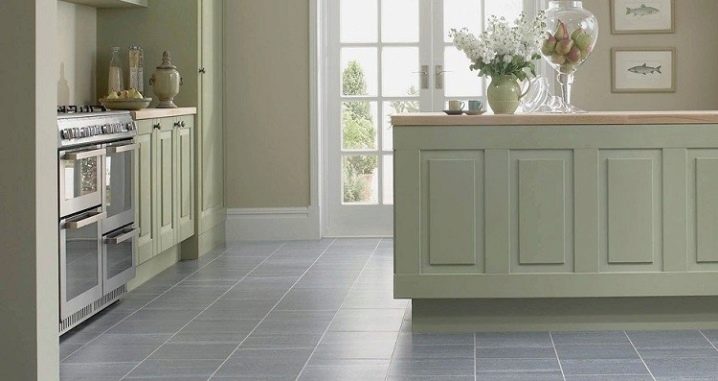
Choosing porcelain stoneware for the kitchen floor, you can easily solve a lot of problems associated with cleaning, creating a fairly aesthetic surroundings in the interior. It is the coating that combines the strength of granite and the environmental friendliness of ceramics that today fully meets all the most stringent requirements for comfort and safety.
Numerous options for combinations of porcelain stoneware in the interior make it easy to solve the problem of choosing the right design solution for any space in terms of area. In this case, a reliable and durable floor covering will cost less than parquet or laminate, and will not require complex and time-consuming installation.
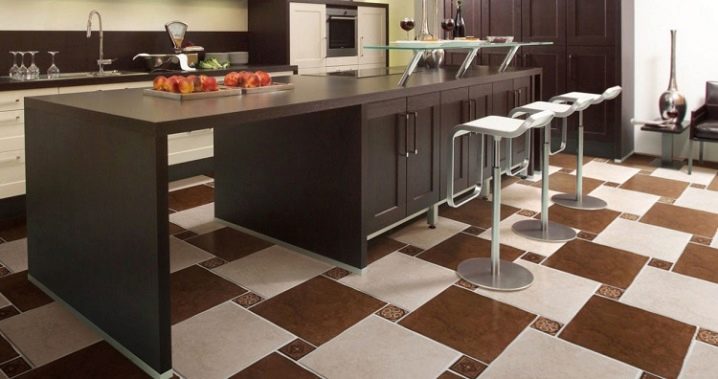
Basic Coating Requirements
When choosing porcelain stoneware for the kitchen floor, it is very important to take into account a number of points that are of great importance for the further operation of the coating. To achieve a harmonious combination of elements in the interior, you can use the correct selection of colors. In the kitchen, it is recommended to use tiles or rectangular modules of beige and sand colors, options that imitate the speckled structure of granite.
The non-slip coating structure is another important factor. In the kitchen, there is constant contact with water, fat-containing substances. Accordingly, the floor should be easy to clean from dirt, not absorb moisture. Conventional ceramic tiles do not have such properties. But porcelain stoneware fully complies with the most stringent sanitary and hygienic requirements, and is easy to maintain.
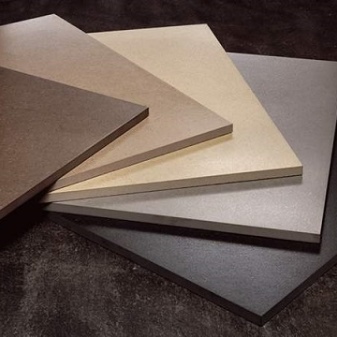
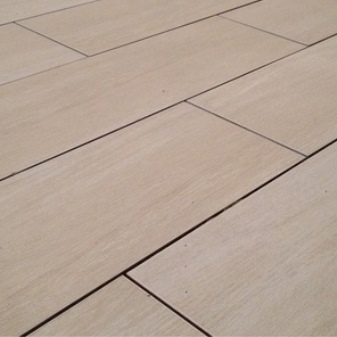
What characteristics are important?
Among the parameters by which it is customary to evaluate porcelain stoneware, it is worth highlighting five.
- The hardness of the material. For porcelain stoneware tiles, due to the peculiarities of processing, this indicator is higher than that of natural stone.
- Completeness of material staining. It is easy to distinguish porcelain stoneware from ceramics by comparing a cut. In the first case, it will be pigmented evenly. In the second, only a thin outer layer will be colored.
- Resistant to wear and tear. For the kitchen, the coating must have a value of at least PEI 3, which allows it to withstand mechanical stress of average intensity.
- Convenience of styling. In the absence of experience, it is worth choosing medium-format elements in the form of squares. Rectangular modules require a more precise fit.
- Smoothness of the coating. Mirror porcelain stoneware, despite any efforts, over time will be covered with noticeable scratches and abrasions. In addition, such a floor always increases the risk of injury and damage. Do not neglect safety requirements - it is better to choose the most comfortable coating from the very beginning.
Considering all these factors, it is possible to ensure the correct selection of porcelain stoneware in the kitchen.
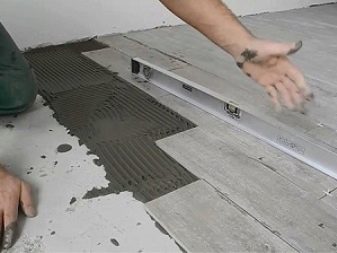

Interior combinations
There are various options for combinations of porcelain stoneware in the interior. The simplest and most popular option is checkerboard styling. The combination of contrasting tiles creates the desired decorative effect, adds volume and structure to the room.
Diagonal styling is another popular option. It allows you to visually increase the area of the room. But do not choose too small formats: they will tire the eye.Installation with offset or inserts of smaller tiles. Allows you to create visually interesting design solutions using porcelain stoneware.
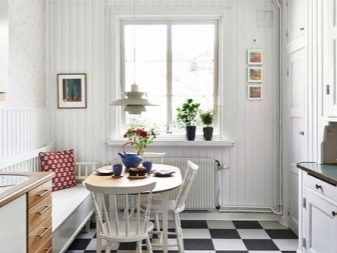
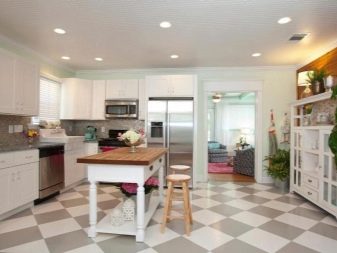
Parquet laying can be performed in a direct version or in the form of a "herringbone", allows you to reliably simulate a coating made of natural materials.
The combination in the interior of tiles of various formats, sizes, and methods of installation looks interesting. With the right color palette, this decor will look very impressive in the kitchen-dining room. In the collections of most European brands, there are options for monochromatic modules and decors that allow you to lay out original ornaments.


Which design should you choose?
To choose the right design of porcelain stoneware for laying, you should pay attention to its external features. The light neutral version helps to visually expand the room, suitable for small typical kitchens. Wood-like decor, especially in a dark version, is designed mainly for country houses. In the space of the kitchen-dining room, this solution will look especially expressive and interesting. The retro style of the room decoration requires a corresponding addition. Respectability of the environment will help to give marble-like porcelain stoneware or with imitation of other types of natural stone.
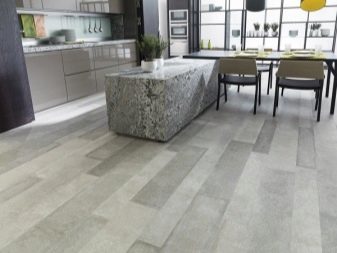

If you want to emphasize the national flavor in the design of the room, it is worth paying attention to design solutions in the original ethnic style, with glazed inserts or tiles. The use of modern and stylish satin stoneware tiles helps to maintain a minimalistic design concept. Also, a monochrome black coating will be appropriate here; the dining room or bar area can be revetted with a glossy imitation of stone.
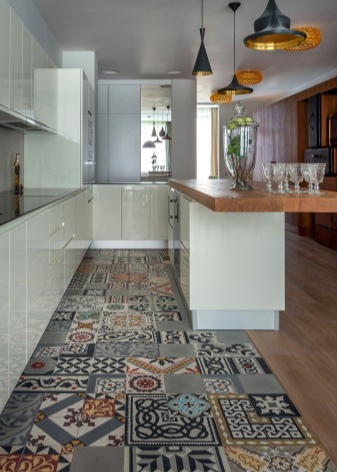
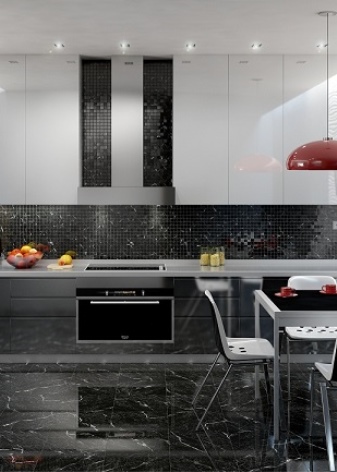
Imitation of parquet or stone?
The most popular design option for porcelain stoneware tiles is imitation of natural stone. Marble, travertine, which have an expressive texture and layered pattern, are not suitable for the kitchen due to their low abrasion resistance. Decorative solutions that reliably recreate a natural ornament, but much more durable and practical, will be more than appropriate here.
If the kitchen is decorated in a fashionable Scandinavian style today, then you should pay attention to the fact that parquet or plank flooring is not recommended for use in rooms with high humidity. In this case, designers have no choice but to choose a light wood-like material with higher strength characteristics. It is better to choose porcelain stoneware textured, with a worn effect. The artificially aged surface looks quite aesthetically pleasing, but simple and concise. It can be used in combination with any modern style in the design of the space, while the imitation of stone will look out of place here.
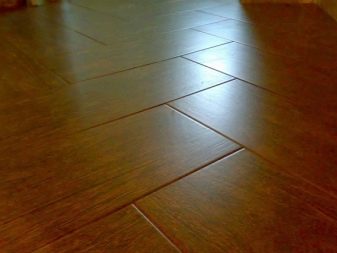
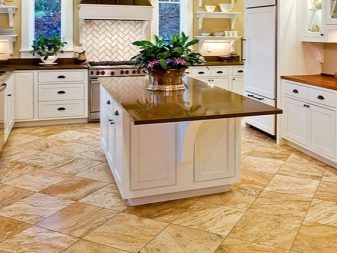
Texture and features
The texture of porcelain stoneware directly affects its ability to form a strong adhesion to the surface or foot. To determine which variety will be most preferable for use in the working, dining area, you should pay attention to all available options.
- Polished glossy. Not suitable for use in the work area, becomes slippery on contact with water or other liquids.
- Matt. It repeats the texture of the stone, does not slip, is resistant to abrasion.
- Double pressed matt. Has an expressive texture with an ornament. Suitable for use in large areas.
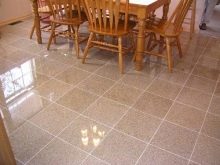
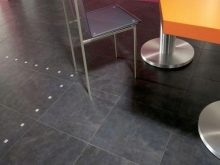
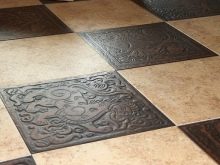
- Structural. Ideal for indoor kitchen applications. Has a pronounced texture of wild stone or wood, allows you to safely move in space.
- Lappated. Porcelain stoneware, with a combination of glossy and matte stripes, minimizes discomfort when using polished tiles.
- Satin-finished. Its surface has a light shine and gloss, looks quite impressive and at the same time almost does not slip, providing stability.
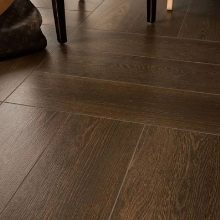
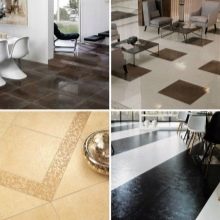
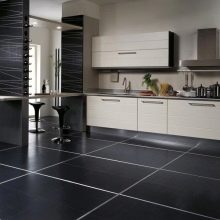
What to consider when laying: ideas and solutions?
When choosing a porcelain stoneware coating for the interior of the kitchen, it is better to give preference to options with a rectified edge, which allows you to ensure a minimum joint width. As an original idea for styling, you can use:
- imitation of parquet or deck boards;
- original tiles in the patchwork style, reminiscent of a patchwork quilt;
- national motives - they are especially loved in Mediterranean countries;
- texture and texture of concrete;
- imitation of grass, pebbles, sea sand.

It is important to remember that tile format is of great importance when laying. In small rooms, it is better to use small and medium-sized elements, in narrow kitchens it is better to install modules across or to use a herringbone installation, as for parquet. The largest modules are used only with high ceilings and sufficient space. Usually they are intended for commercial spaces: restaurants, cafes, canteens.
You should not choose light-colored coverings of a monochromatic format - they look more aesthetically pleasing in design for natural travertine, marble, sandstone.
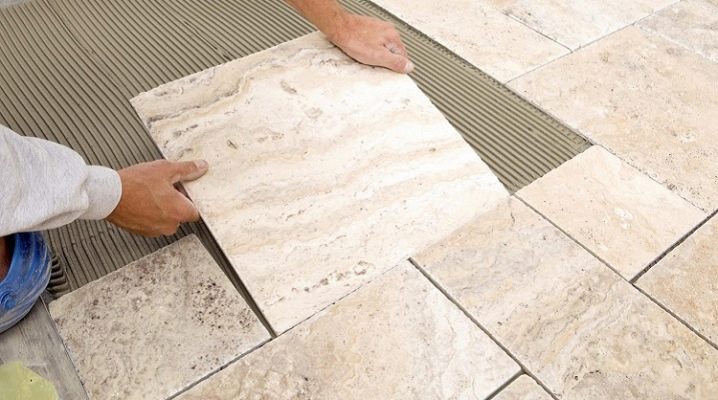
The best design ideas offered by modern manufacturers of porcelain stoneware tiles allow you to choose a reliable and safe coating for your interior in any style. It is enough to decide on the type and design features of the material, and then install the plates on the prepared base. The average service life of porcelain stoneware is 30-50 years, respectively, with high-quality installation, it will take a long time to change the coating.
How to choose porcelain stoneware for the kitchen, see the next video.








The comment was sent successfully.